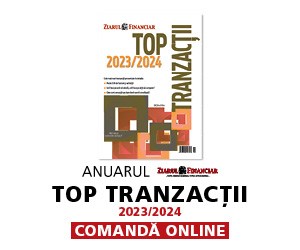Whereas the automotive market in Bucharest and Ilfov is 'dominated' by new cars, people in Transylvania still prefer to buy second-hand cars imported from the West, a ZF analysis reveals.
Bucharest, which accounts for almost half of the cars in the country, continues to be the growth driver of the automotive market, along with Ilfov county, since this is where the highest average incomes are earned, according to a ZF analysis.
Therefore in Bucharest, where the average salary estimate for this year is 511 euros, according to the Forecasting Commission, the number of new cars registered last year was over five times higher than that of second-hand cars, while in the first half of this year the ratio stood at more than four to one. In Ilfov, which ranks second in terms of income, 500 euros in 2009, the number of new cars registered was double the number of second-hand vehicles; the ratio was the same in the first half.
In Cluj, the third leading county in terms of income (380 euros) things are different. Whereas in 2008 15,794 second-hand cars and almost 7,000 new cars were registered, the number of second-hand cars was four times higher in the first half of 2009.
The same goes for Timis and Sibiu counties, while in Gorj the new to second-hand car ratio has gone down to 1 to 3 in 2009. In Dolj, where the car factory in Craiova stopped manufacturing last year, 5,326 new cars and 6,896 second-hand cars were registered in 2008. In the first half of 2009, the latter gained ground, reaching a total of 2,547, while the number of new cars fell to 1,099 units.
The second-hand car market surged after the modification of the first registration tax and the enforcement of the pollution tax in July last year.
Despite the salary increases and higher-than-average incomes, the counties in the Western part of Romania have not shifted their preference to new cars, even though dealer networks have expanded aggressively.
Viorel Niculescu, former head of Romcar, the Ford importer in Romania, says that dependence on the car fairs for used vehicles is the reason why the number of such cars is lower in the South and East of the country.
He says the number of second-hand cars in Western Romania is higher because people buy them directly from sellers in Hungary, Austria and Germany, while "those in the South and East are dependent on car fairs, which they do not trust."
Given the proximity of Hungary and the generally lower prices, the market there attracted even new car clients. The even harsher decline than in Romania in some months prompted dealers in Hungary to offer as much as 50% discounts to get cash.
"Many people in Transylvania buy new cars from Hungarian dealers, and when they bring the car in Romania, it is registered as a second-hand car," Niculescu says.
Pentru alte știri, analize, articole și informații din business în timp real urmărește Ziarul Financiar pe WhatsApp Channels











































